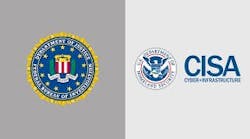Dec. 28--WASHINGTON -- The government's high-profile offensive to control the borders is spawning a growth market for the nation's defense industry.
More than a half-dozen major contractors, including Lockheed Martin and Texas divisions of Raytheon and L-3 Communications, are preparing to compete for a multibillion-dollar Department of Homeland Security initiative designed to fortify the borders with an array of sophisticated technology.
The Secure Border Initiative will encompass what Homeland Security Secretary Michael Chertoff describes as a "virtual fence" stretching 6,000 miles along the borders with Mexico and Canada, as well as 2,000 of miles of coastline.
Potential components include satellites, unmanned aerial vehicles, radar-equipped airships and next-generation replacements for thousands of sensors and mounted cameras already in place.
The gadgetry will augment an expanded force of Border Patrol agents.
Other ingredients will undoubtedly materialize after the department formally solicits proposals early next year. The initiative has been absorbed into the Secure Border Initiative. The cost was initially projected at $2.5 billion but will likely grow.
"The overall strategy over the next five years is to gain control of the border," said Homeland Security spokesman Jarrod Agen. The plan will also likely include fencing in high-density urban areas, he said, but the primary focus will accent technology. "We're basically looking at a 21st-Century fence, not a 19th-Century fence," Agen said.
Chertoff has set up an office in his department to oversee the competition, which industry officials expect to last for at least nine months before Homeland Security officials make a decision.
The project parallels an intense congressional debate over the presence of more than 11 million undocumented residents in the United States and the threat of a terrorist attack from Mexico or Canada. The issue has accelerated in recent weeks after President Bush outlined his immigration priorities in a speech in Tucson, Ariz.
With the White House and many members of Congress insisting on toughened border security, energized defense contractors say they sense a growth market to take up the slack from tightening defense budgets and scaled-backed Pentagon contracts.
"The president's speech has really lit this one up," said Mark Reed, a former U.S. immigration official who heads Border Management Strategies, a consulting firm in Tucson. "Everybody is trying to play in the sandbox."
Contractors poised to jump into the competition include Lockheed Martin, L-3, Raytheon, Northrop Grumman, BAE Systems, SAIC of San Diego and Computer Sciences Corp. of El Segundo, Calif.
Another defense giant, Boeing, is not expected to participate.
Lockheed Martin, based in Bethesda, Md., will pursue the contract through a division based in Rockville, Md., although other units may also play a role, said Dave Kier, Lockheed's vice president and managing director for protection. Lockheed Martin Aeronautics, headquartered in Fort Worth, is not expected to be involved in the project.
L-3's Integrated Systems subsidiary, headquartered in Greenville, and Raytheon's Network Centric Systems, headquartered in McKinney, would lead the offensive for their corporations. An Austin-based unit of BAE could also get a piece of the action, company spokesman John Measell said.
Bidders will likely form teams and would rely heavily on scores of subcontractors, including many in Texas.
Lockheed Martin and Northrop Grumman have dispatched experts to the Southwest border to study the terrain and help develop computer models.
The initiative will expand and improve an existing surveillance net, including thousands of sensors and pole-mounted cameras that spot border-crossers and beam signals to command-and-control facilities, which in turn dispatch agents. The camera system, in place since 1998, came under fire from lawmakers this year because of frequent breakdowns and management problems.
Chertoff envisions closer scrutiny from the skies, possibly through satellites and expanded use of unmanned aerial vehicles, which have proven effective on battlefields in Iraq and Afghanistan. The Border Patrol, a branch of Homeland Security, has one Predator, which has logged 228 hours and assisted in the arrests of 300 people. The agency temporarily used two other unmanned aerial vehicles last year along Arizona's border with Mexico.
Others are also pressing for increased deployment of balloons to oversee a broad swath on both sides of the border. A high-altitude airship that Lockheed is developing for the U.S. missile defense agency -- 16 times larger than the Goodyear Blimp -- would be ideal for standing vigil over the border, Kier said.
Rep. Rick Renzi, R-Ariz., is pushing a "Red Zone Defense" that would use radar-equipped tethered balloons to peer across the Southwest border to spot smugglers and illegal crossers as they left Mexico.
Los Angeles-based Northrop Grumman, which manufactures the Global Hawk unmanned aerial reconnaissance vehicle, will likely tout its expertise in unmanned aerial vehicle technology.Other potential components of Chertoff's virtual fence include battery-powered portable radar units that agents could carry in a backpack and portable sensors that could be easily moved as immigrants switch routes.
Improved seismic sensors that can pick up the rumbling of a smuggler's truck or sophisticated receivers that can ferret out a cellphone signal in the underbrush may also be part of the mix.
Bruce Walker, director of homeland security for Northrop Grumman, called the border initiative "a pretty big deal" that will "attract an awful lot of competition." But "at the end of the day," he said, only a few may have the expertise to make a serious showing.
The growing public outcry for strengthening borders could give contractors a lasting source of business, said Darren Bezdek, a manager for INPUT of Reston, Va., a market research firm that tracks federal procurement.
"It's going to be very significant," he said. "Border security is not going to be a one-time solution. It's going to be ongoing for years to come."
(Fort Worth Star-Telegram (Fort Worth) (KRT) -- 12/29/05)

